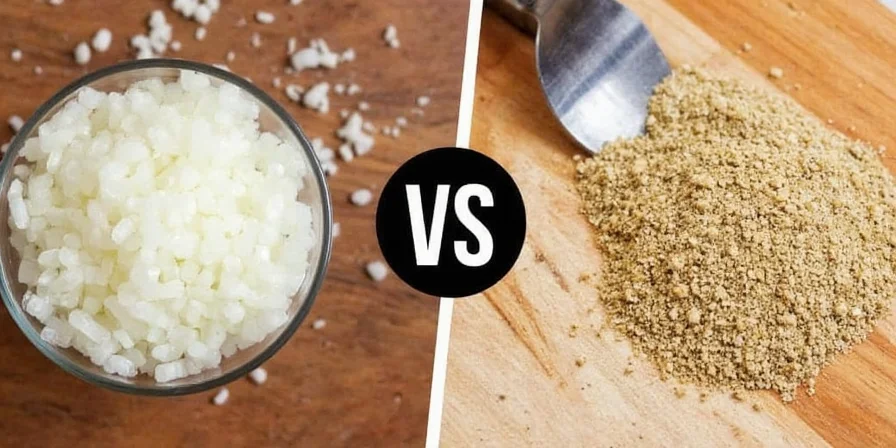Spice Up Your Life: A Flavorful Journey Through African Cuisine
Description
In this vibrant exploration of African spice traditions, we dive into the rich tapestry of flavors, cultures, and culinary secrets that define one of the world's most diverse continents. Whether you're a seasoned chef or a curious home cook, prepare to be amazed by how spices shape African food culture — from North Africa’s warm ras el hanout to West Africa’s fiery pepper soups.
Table of Contents
- Introduction
- Top 10 Spices That Define African Cuisine
- Spice Traditions Across Regions
- Practical Tips for Cooking with African Spices
- Visual Guide: Spice Flavors at a Glance
- Conclusion
Introduction: Where Culture Meets Cuisine
Africa isn't just a continent of landscapes and wildlife — it's also a melting pot of cultures, languages, and spices. Every meal tells a story of history, trade routes, migration, and identity. From the bustling souks of Morocco to the village kitchens of Ghana, spices are the unsung heroes behind every mouthwatering dish.
Image: A vibrant spice market in Marrakech
Top 10 Spices That Define African Cuisine
Let’s take a flavorful tour through the spice rack of Africa. Here are the top 10 spices that give African dishes their signature punch:
- Ras el Hanout (North Africa) – A complex blend of up to 30 spices, often including cumin, cinnamon, and cardamom.
- Toum (Tunisia/Algeria) – Though not a spice itself, this garlicky paste amplifies flavor profiles.
- Berber Salt (Morocco) – Smoked salt infused with chili and herbs; great on meats.
- Grains of Paradise (West Africa) – A peppery alternative to black pepper with hints of citrus.
- Crayon Bouquet (Cameroon/French-speaking Africa) – Dried herb bundles that add earthiness.
- Scotch Bonnet Pepper (West & Central Africa) – The backbone of heat in jollof rice and pepper soup.
- Sumac (Sudan/East Africa) – Adds tangy brightness to stews and dips.
- Nigella Seeds (Ethiopia/Sudan) – Used in injera bread and spice blends like berbere.
- Boukha (Alcohol-based spice mix, Algeria) – Infused with dried fruits and seeds, used more like a seasoning oil.
- Kalakukko (Southern Africa) – A lesser-known but rising star, known for its smoky-sweet aroma.
Image: Classic African spices laid out for comparison
Spice Traditions Across Regions
Africa is vast, and each region has developed its own unique relationship with spices. Let’s break it down:
North Africa: The Land of Complex Blends
- Morocco: Ras el hanout, preserved lemons, saffron
- Tunisia: Harissa, caraway, coriander
- Egypt: Mahlab, dukkah, sumac
West Africa: Bold, Earthy, and Fiery
- Nigeria: Scotch bonnet, crayfish, alligator pepper
- Ghana: Grains of paradise, ginger, chili
- Senegal: Thieboudienne spice mix, garlic, thyme
East Africa: Tropical and Fragrant
- Ethiopia: Berbere, mitmita, fenugreek
- Kenya: Pilau masala, cardamom, cloves
- Somalia: Xawaash, nutmeg, black pepper
Central & Southern Africa: Regional Gems
- Congo: Mange tout sauvage (wild legume), smoked paprika
- South Africa: Peri-peri, curry powder, tamarind
- Zimbabwe: Sadza-friendly seasonings, dried tomatoes, wild herbs
Image: Regional spice highlights across the African continent
Practical Tips for Cooking with African Spices
Ready to bring some African flair into your kitchen? Here are 7 practical tips to make the most of these powerful ingredients:
- Toasting makes all the difference. Toast whole spices like cumin or coriander seeds before grinding to unlock deeper flavor.
- Dry rubs > wet marinades when using strong spice blends like berbere or ras el hanout.
- Beware the scotch bonnet! Use gloves when chopping and adjust to taste. It can pack a serious punch.
- Use oil as a carrier for ground spices — helps release aromas and infuse dishes.
- Layer your spices during cooking. Add hardier ones early, delicate ones later.
- Balance heat with acid — lemon juice or vinegar can tame overly spicy dishes.
- Store spices properly — in airtight containers away from light and moisture for longer shelf life.
Image: Toasting spices for a West African stew
Visual Guide: Spice Flavors at a Glance
| Spice | Region | Flavor Profile | Best For | Heat Level (1–5) |
|---|---|---|---|---|
| Ras el Hanout | Morocco | Earthy, floral, slightly sweet | Lamb tagines, couscous | 2 |
| Scotch Bonnet | West Africa | Fruity, smoky, intensely hot | Pepper soup, sauces | 5 |
| Berbere | Ethiopia | Smoky, spicy, with undertones of citrus | Doro wat, lentils | 4 |
| Harissa | Tunisia | Spicy, garlicky, smoky | Stews, grilled meats | 4 |
| Grains of Paradise | West Africa | Pungent, citrusy, peppery | Fish, soups | 2 |

Image: Comparing popular African spices side by side
Conclusion: Embrace the Global Spice Tradition of Africa
African cuisine may be underrated globally, but its spices tell a bold and beautiful story. From the aromatic spice bazaars of Marrakech to the humble kitchens where jollof rice simmers in the background, African food culture is a testament to the power of flavor.
So next time you’re reaching for the usual salt and pepper, why not grab a pinch of berbere, a dash of harissa, or a sprinkle of grains of paradise? Your taste buds — and your inner chef — will thank you.
Remember: Spices aren’t just about heat or aroma — they’re about connection. And few cuisines connect people like African food does.
Image: Family bonding over a traditional West African meal










 浙公网安备
33010002000092号
浙公网安备
33010002000092号 浙B2-20120091-4
浙B2-20120091-4